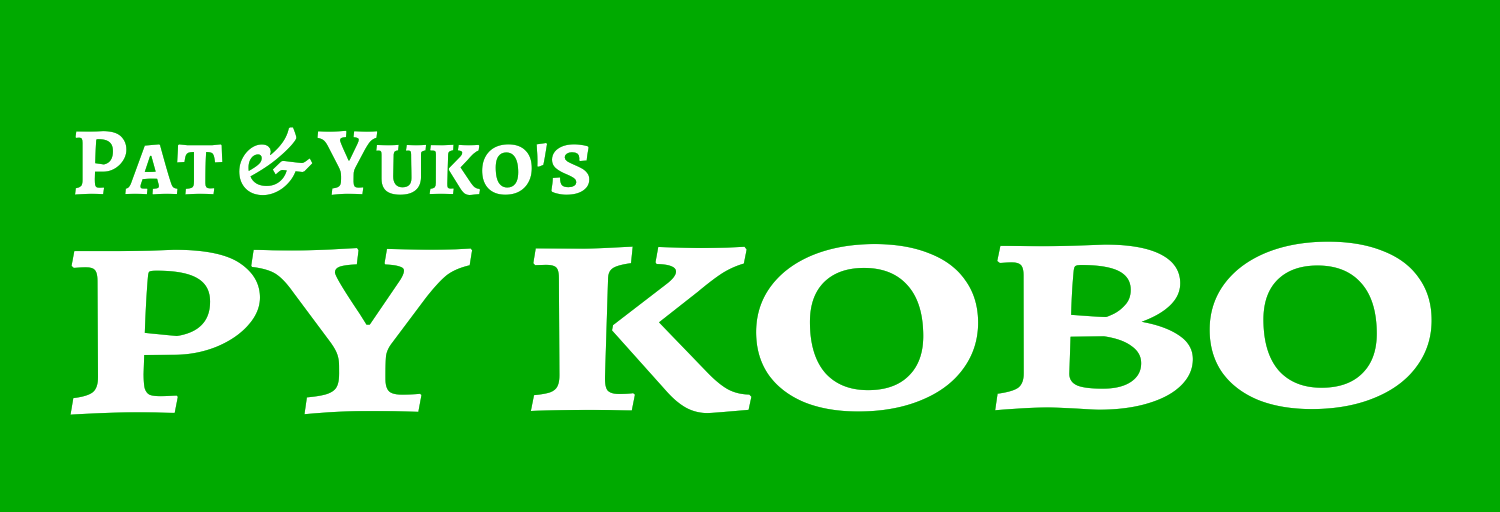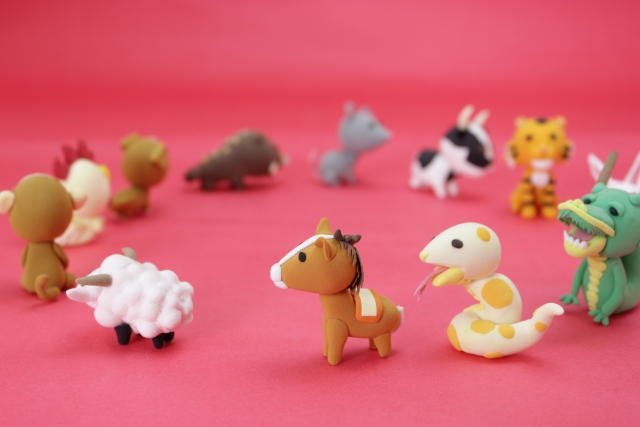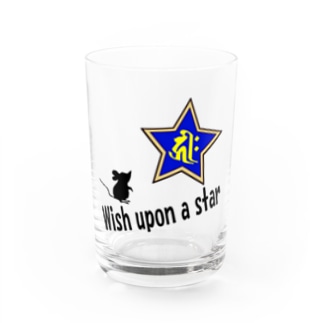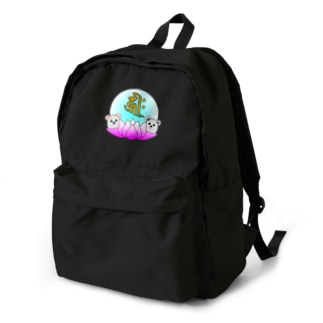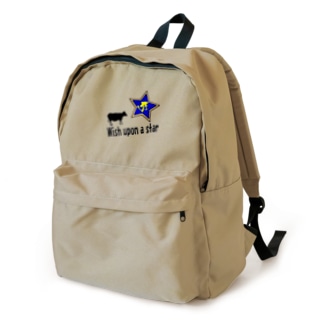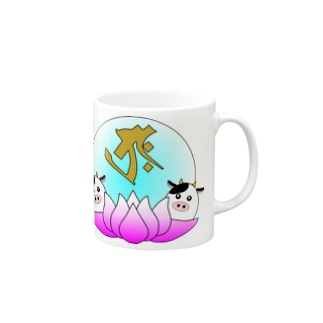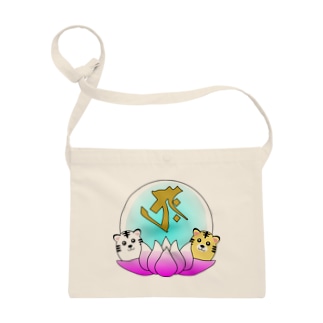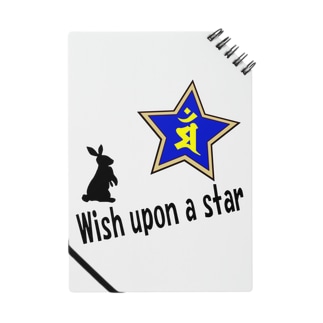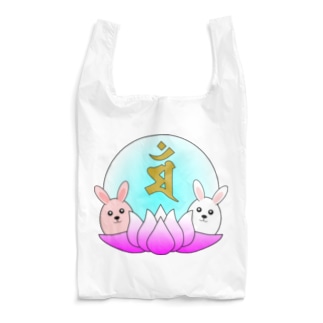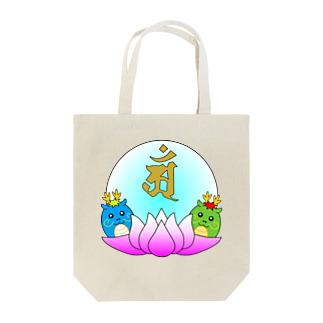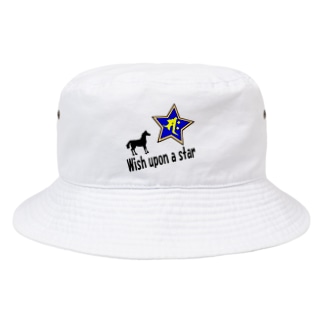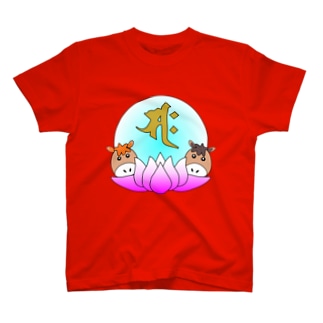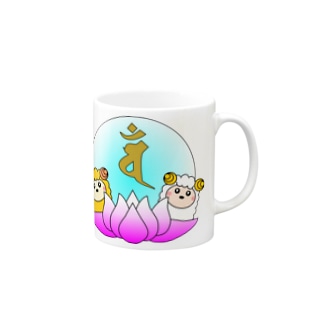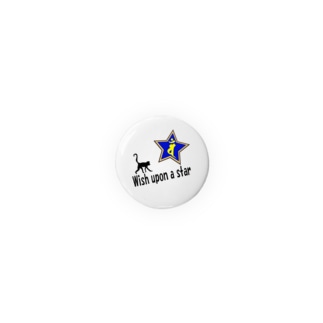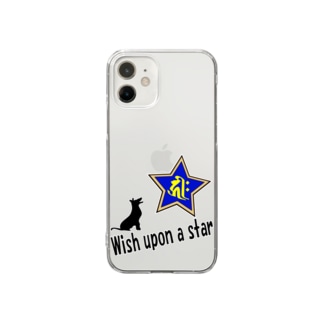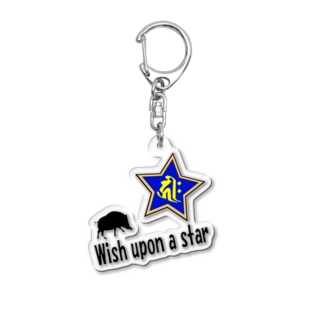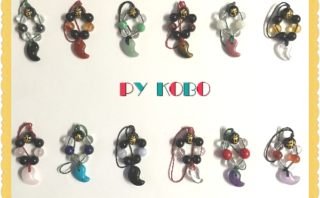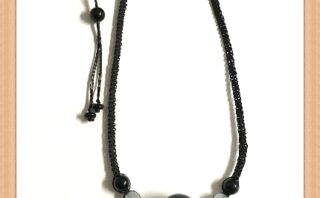What is Junishi?
It is said that the origin of Junishi (the Japanese twelve zodiac animal signs / 十二支) derives from the fact that, in the Yin dynasty of China, Wang Chong (王充) had written the literature, assigning familiar animals in order to make it easier to remember the number of words that count the years.
In the Yin dynasty, there are already the ten numerals to count the sun, and they are called “jikkan” (the ten Heavenly Stems / 十干). Later, they came to be used in combination with Junishi and the combination is called “Eto / 干支“.
Junishi and Jikkan
Jikkan (the ten Heavenly Stems / 十干)
Kou ( 甲 / Kinoe), Otsu (乙 / Kinoto), Hei (丙 / Hinoe), Tei (丁 / Hinoto) , Bo (戊 / Tsuchinoe), Ki (己 / Tsuchinoto), Kou (庚 / Kanoe), Shin (辛 / Kanoto), Jin (壬 / Mizunoe), Ki (癸 / Mizunoto)
Jikkan (十干) is a method of counting that was born in ancient China, and counts 10 days as one phrase (one division) as Kou / 甲, Otsu / 乙, Hei / 丙, Tei / 丁, Bo / 戊, Ki / 己, Kou / 庚, Shin / 辛, Jin / 壬, and Ki / 癸. Eventually, Jikkan came to be considered as a combination of the yin and yang properties (yin and yang philosophy / 陰陽思想) and the attributes of wood, fire, earth, metal, and water (five element theory / 五行説). In Japan, “yang / 陽” likened to “E / 兄 (elder brother)” and “yin / 陰” likened to “TO / 弟 (younger brother)”, and the following names are used to read Jikkan in Kunyomi (Japanese reading of kanji). The yin-yang theory and the theory of the five elements were also born in ancient China, and are great ways of thinking that have influenced not only Jikkan and Junishi, but also various later thoughts and philosophies. For details, please refer to this page.
| Jikkan / 十干 | Yin and Yang / 陰陽 | Five elements / 五行 | Yin-Yang and the five elements / 陰陽五行 | Kunyomi / 訓読み in Japan |
|---|---|---|---|---|
| Kou / 甲(こう) | Yang / 陽(E / 兄) | Wood / 木 | Yang wood /木+兄 | Kinoe きのえ |
| Otsu / 乙(おつ) | Yin / 陰(TO / 弟) | Wood / 木 | Yin wood /木+弟 | Kinoto きのと |
| Hei / 丙(へい) | Yang / 陽(E / 兄) | Fire / 火 | Yang fire /火+兄 | Hinoe ひのえ |
| Tei / 丁(てい) | Yin / 陰(TO / 弟) | Fire / 火 | Yin fire /火+弟 | Hinoto ひのと |
| Bo / 戊(ぼ) | Yang / 陽(E / 兄) | Earth / 土 | Yang earth /土+兄 | Tsuchinoe つちのえ |
| Ki / 己(き) | Yin / 陰(TO / 弟) | Earth / 土 | Yin earth /土+弟 | Tsuchinoto つちのと |
| Kou / 庚(こう) | Yang / 陽(E / 兄) | Metal / 金 | Yang metal /金+兄 | Kanoe かのえ |
| Shin / 辛(しん) | Yin / 陰(TO / 弟) | Metal / 金 | Yin metal /金+弟 | Kanoto かのと |
| Jin / 壬(じん) | Yang / 陽(E / 兄) | Water / 水 | Yang water /水+兄 | Mizunoe みずのえ |
| Ki / 癸(き) | Yin / 陰(TO / 弟) | Water / 水 | Yin water /水+弟 | Mizunoto みずのと |
Jikkan also plays a role in determining Eho / 恵方 (lucky directions). Eho is the direction of Toshitokujin / 歳徳神, the god of Onmyodo / 陰陽道, and is considered to be the best direction of the year. For example, in 2024, “Eto / 干支” is Knoe-tatsu / 甲辰 (Yin earth dragon) and Jikkan is Kinoe / 甲 (Yin wood), so Eho in 2024 is “east-northeast by east / 東北東やや東“.
Junishi (the twelve zodiac animal signs / 十二支)
Rat (子/ ne), Cow (丑 / ushi), Tiger (寅 / tora), Rabbit (卯 / u), Dragon (辰 / tatsu), Snake (巳 / mi), Horse (午 / uma), Sheep (未 / hituji), Monkey (申 / saru), Rooster (酉 / tori), Dog (戌 / inu), Boar (亥 / i)
| Junishi / 十二支 | Animals / 動物 | Yin-Yang and the five elements / 陰陽五行 | Directions / 方位 | Seasons / 季節 | Month / 月 | Time / 時刻 |
|---|---|---|---|---|---|---|
| Ne / 子(ね) | Rat / 鼠(ねずみ) | Yang Water / 陽・水 | North / 北 0℃ | Winter / 冬 | November / 11月 | 23:00-1:00 |
| Ushi /丑(うし) | Ox / 牛(うし) | Yin Earth / 陰・土 | North-northeast / 北北東 | Winter / 冬 | December / 12月 | 1:00-3:00 |
| Tora / 寅(とら) | Tiger / 虎(とら) | Yang Wood / 陽・木 | East-northeast / 東北東 | Spring / 春 | January / 1月 | 3:00-5:00 |
| U / 卯(う) | Rabbit / 兎(うさぎ) | Yin Wood / 陰・木 | East / 東 90℃ | Spring / 春 | February / 2月 | 5:00-7:00 |
| Tatsu / 辰(たつ) | Dragon / 龍(たつ) | Yang Earth / 陽・土 | East-southeast / 東南東 | Spring / 春 | March / 3月 | 7:00-9:00 |
| Mi / 巳(み) | Snake / 蛇(へび) | Yin Fire / 陰・火 | South-southeast / 南南東 | Summer / 夏 | April / 4月 | 9:00-11:00 |
| Uma / 午(うま) | Horse / 馬(うま) | Yang Fire / 陽・火 | South / 南 180℃ | Summer / 夏 | May / 5月 | 11:00-13:00 |
| Hitsuji / 未(ひつじ) | Sheep / 羊(ひつじ) | Yin Earth / 陰・土 | South-southwest / 南南西 | Summer / 夏 | June / 6月 | 13:00-15:00 |
| Saru / 申(さる) | Monkey / 猿(さる) | Yang Metal / 陽・金 | West-southwest / 西南西 | Autumn / 秋 | July / 7月 | 15:00-17:00 |
| Tori / 酉(とり) | Rooster / 鶏(とり) | Yin Metal / 陰・金 | West / 西 270℃ | Autumn / 秋 | August / 8月 | 17:00-19:00 |
| Inu / 戌(いぬ) | Dog / 犬(いぬ) | Yang Earth / 陽・土 | West-northwest / 西北西 | Autumn / 秋 | September / 9月 | 19:00-21:00 |
| I / 亥(い) | Boar / 猪(いのしし) | Yin Water / 陰・水 | North-northwest / 北北西 | Winter / 冬 | October / 10月 | 21:00-23:00 |
As shown in the table above, 12 directions were determined using Junishi, and Jikkan were used for the 24 directions.
Onmyodo / 陰陽道, which was established during the Heian period in Japan based on the theory of the five elements of Yin and Yang, considers the passage of demons (Jaki / 邪気 evil spirits)” to be the “kimon / 鬼門 (the demon’s gate)”, and its direction is the northeast direction of “Ushitora / 丑寅“. In addition, the opposite direction of the kiimon (the demon’s gate), southwest “Hitsujisaru / 未申” is called the “ura-kimon / 裏鬼門“. The kimon and the ura-kimon are considered unfavorable directions because evil spirits pass through them, and it is said that it is not a good idea to install entrances and water facilities such as a kitchen and toilets in these directions.
Year of birth and Eto (Jikkan + Junishi)
Eto / 干支 is a combination of Jikkan and Junishi only in the patterns of yang and yang and yin and yin, and there are 60 patterns. In Japan we read Eto with Kun-yomi mostly.
Jikkan / 十干 (the ten Heavenly Stems) : 甲 (Kou), 乙 (Otsu/Itsu), 丙 (Hei), 丁 (Tei), 戊 (Bo), 己 (Ki), 庚 (Kou), 辛 (Shin), 壬 (Jin), 癸 (Ki) *Brackets are On-yomi (readings derived from the Chinese pronunciations). Readings above Kanji are Kun-yomi (Japanese readings).
Junishi / 十二支 (the twelve zodiac animal signs) : 子 (Shi/Rat), 丑 (Chu/Ox), 寅 (In/Tiger), 卯 (Bou/Rabbit), 辰 (Shin/Dragon), 巳 (Shi/Snake), 午 (Go/Horse), 未 (Bi/Sheep), 申 (Shin/Monkey), 酉 (Yu/Rooster), 戌 (Jutsu/Dog), 亥 (Gai/Boar) *Brackets are On-yomi and animals. Readings above Kanji are Kun-yomi (Japanese readings).
| Eto (Jikkan + Junishi) / 干支 | Year of birth | Yin-Yang and the five elements / 陰陽五行 |
|---|---|---|
| Kinoe (Kou) 甲 + Ne (Shi) 子 甲子 / Kinoe–ne きのえね | Kinoe: Yang Wood Ne: Yang Water | |
| Kinoto (Otsu/Itsu) 乙 + Ushi (Chu) 丑 乙丑 / Kinoto–ushi きのとうし | Kinoto: Yin Wood Ushi: Yin Earth | |
| Hinoe (Hei) 丙 + Tora (In) 寅 丙寅 / Hinoe–tora ひのえとら | Hinoe: Yang Fire Tora: Yang Wood | |
| Hinoto (Tei) 丁 + U (Bou) 卯 丁卯 / Hinoto–u ひのとう | Hinoto: Yang Fire U: Yang Wood | |
| Tsuchinoe (Bo) 戊 + Tatsu (Shin ) 辰 戊辰 / Tsuchinoe–tatsu つちのえたつ | Tsuchinoe: Yang Earth Tatsu: Yang Earth | |
| Tsuchinoto (Ki) 己 + Mi (Shi) 巳 己巳 / Tsuchinoto–mi つちのとみ | Tsuchinoto: Yin Earth Mi: Yin Fire | |
| Kanoe (Kou) 庚 + Uma (Go) 午 庚午 / Kanoe–uma かのえうま | Kanoe: Yang Metal Uma: Yang Fire | |
| Kanoto (Shin) 辛 + Hitsuji (Bi) 未 辛未 / Kanoto–hitsuji かのとひつじ | Kanoto: Yang Metal Hitsuji: Yang Earth | |
| Mizunoe (Jin) 壬 + Saru (Shin) 申 壬申 / Mizunoe–saru みずのえさる | Mizunoe: Yang Water Saru: Yang Metal | |
| Mizunoto (Ki) 癸 + Tori (Yu) 酉 癸酉 / Mizunoto–tori みずのととり | Mizunoto: Yin Water Tori: Yin Metal | |
| Kinoe (Kou) 甲 + Inu (Jutsu) 戌 甲戌 / Kinoe–inu きのえいぬ | Kinoe: Yang Wood Inu: Yang Earth | |
| Kinoto (Otsu/Itsu) 乙 + I (Gai) 亥 乙亥 / Kinoto–i きのとい | Kinoto: Yin Wood I: Yin Water | |
| Hinoe (Hei) 丙 + Ne (Shi) 子 丙子 / Hinoe–ne ひのえね | Hinoe: Yang Fire Ne: Yang Water | |
| Hinoto (Tei) 丁 + Ushi (Chu) 丑 丁丑 / Hinoto–ushi ひのとうし | Hinoto: Yin Fire Ushi: Yin Earth | |
| Tsuchinoe (Bo) 戊 + Tora (In) 寅 戊寅 / Tsuchinoe–tora つちのえとら | Tsuchinoe: Yang Earth Tora: Yang Wood | |
| Tsuchinoto (Ki) 己 + U (Bou) 卯 己卯 / Tsuchinoto–u つちのとう | Tsuchinoto: Yin Earth U: Yang Wood | |
| Kanoe (Kou) 庚 + Tatsu (Shin) 辰 庚辰 / Kanoe–tatsu かのえたつ | Kanoe: Yang Metal Tatsu: Yang Earth | |
| Kanoto (Shin) 辛 + Mi (Shi) 巳 辛巳 / Kanoto–mi かのとみ | Kanoto: Yin Metal Mi: Yin Fire | |
| Mizunoe (Jin) 壬 + Uma (Go) 午 壬午 / Mizunoe–uma みずのえうま | Mizunoe: Yang Water Uma: Yang Fire | |
| Mizunoto (Ki) 癸 + Hitsuji (Bi) 未 癸未 / Mizunoto–hitsuji みずのとひつじ | Mizunoto: Yin Water Hitsuji: Yin Earth | |
| Kinoe (Kou) 甲 + Saru (Shin) 申 甲申 / Kinoe–saru きのえさる | Kinoe: Yang Wood Saru: Yang Metal | |
| Kinoto (Otsu/Itsu) 乙 + Tori (Yu) 酉 乙酉 / Kinoto–tori きのととり | Kinoto: Yin Wood Tori: Yin Metal | |
| Hinoe (Hei) 丙 + Inu (Jutsu) 戌 丙戌 / Hinoe–inu ひのえいぬ | Hinoe: Yang Fire Inu: Yang Earth | |
| Hinoto (Tei) 丁 + I (Gai) 亥 丁亥 / Hinoto–i ひのとい | Hinoto: Yin Fire I: Yin Water | |
| Tsuchinoe (Bo) 戊 + Ne (Shi) 子 戊子 / Tsuchinoe–ne つちのえね | Tsuchinoe: Yang Earth Ne: Yang Water | |
| Tsuchinoto (Ki) 己 + Ushi (Chu) 丑 己丑 / Tsuchinoto–ushi つちのとうし | Tsuchinoto: Yin Earth Ushi: Yin Earth | |
| Kanoe (Kou) 庚 + Tora (In) 寅 庚寅 / Kanoe–tora かのえとら | Kanoe: Yang Metal Tora: Yang Wood | |
| Kanoto (Shin) 辛 + U (Bou) 卯 辛卯 / Kanoto–u かのとう | Kanoto: Yin Metal U: Yin Wood | |
| Mizunoe (Jin) 壬 + Tatsu (Shin) 辰 壬辰 / Mizunoe–tatsu みずのえたつ | Mizunoe: Yang Water Tatsu: Yang Earth | |
| Mizunoto (Ki) 癸 + Mi (Shi) 巳 癸巳 / Mizunoto–mi みずのとみ | Mizunoto: Yin Water Mi: Yin Fire | |
| Kinoe (Kou) 甲 + Uma (Go) 午 甲午 / Kinoe–uma きのえうま | Kinoe: Yang Wood Uma: Yang Fire | |
| Kinoto (Otsu/Itsu) 乙 / Hitsuji (Bi) 未 乙未 / Kinoto–hitsuji きのとひつじ | Kinoto: Yin Wood Hitsuji: Yin Earth | |
| Hinoe (Hei) 丙+ Saru (Shin) 申 丙申 / Hinoe–saru ひのえさる | Hinoe: Yang Fire Saru: Yang Metal | |
| Hinoto (Tei) 丁 + Tori (Yu) 酉 丁酉 / Hinoto–tori ひのととり | Hinoto: Yin Fire Tori: Yin Metal | |
| Tsuchinoe (Bo) 戊 + Inu (Jutsu) 戌 戊戌 / Tsuchinoe–inu つちのえいぬ | Tsuchinoe: Yang Earth Inu: Yang Earth | |
| Tsuchinoto (Ki) 己 + I (Gai) 亥 己亥 / Tsuchinoto–i つちのとい | Tsuchinoto: Yin Earth I: Yin Water | |
| Kanoe (Kou) 庚 + Ne (Shi) 子 庚子 / Kanoe–ne かのえね | Kanoe: Yang Metal Ne: Yang Water | |
| Kanoto (Shin) 辛 + Ushi (Chu) 丑 辛丑 / Kanoto–ushi かのとうし | Kanoto: Yin Metal Ushi: Yin Earth | |
| Mizunoe (Jin) 壬 + Tora (In) 寅 壬寅 / Mizunoe–tora みずのえとら | Mizunoe: Yang Water Tora: Yang Wood | |
| Mizunoto (Ki) 癸 + U (Bou) 卯 癸卯 / Mizunoto–u みずのとう | Mizunoto: Yin Water U: Yin Wood | |
| Kinoe (Kou) 甲 + Tatsu (Shin) 辰 甲辰 / Kinoe–tatsu きのえたつ | Kinoe: Yang Wood Tatsu: Yang Earth | |
| Kinoto (Otsu/Itsu) 乙 + Mi (Shi) 巳 乙巳 / Kinoto–mi きのとみ | Kinoto: Yin Wood Mi: Yin Fire | |
| Hinoe (Hei) 丙 + Uma (Go) 午 丙午 / Hinoe–uma ひのえうま | Hinoe: Yang Fire Uma: Yang Fire | |
| Hinoto (Tei) 丁 + Hitsuji (Bi) 未 丁未 / Hinoto–hitsuji ひのとひつじ | Hinoto: Yin Fire Hitsuji: Yin Earth | |
| Tsuchinoe (Bo) 戊 + Saru (Shin) 申 戊申 / Tsuchinoe–saru つちのえさる | Tsuchinoe: Yang Earth Saru: Yang Metal | |
| Tsuchinoto (Ki) 己 + Tori (Yu) 酉 己酉 / Tsuchinoto–tori つちのととり | Tsuchinoto: Yin Earth Tori: Yin Metal | |
| Kanoe (Kou) 庚 + Inu (Jutsu) 戌 庚戌 / Kanoe–inu かのえいぬ | Kanoe: Yang Metal Inu: Yang Earth | |
| Kanoto (Shin) 辛 + I (Gai) 亥 辛亥 / Kanoto–i かのとい | Kanoto: Yin Metal I: Yin Water | |
| Mizunoe (Jin) 壬 + Ne (Shi) 子 壬子 / Mizunoe–ne みずのえね | Mizunoe: Yang Water Ne: Yang Water | |
| Mizunoto (Ki) 癸 + Ushi (Chu) 丑 癸丑 / Mizunoto–ushi みずのとうし | Mizunoto: Yin Water Ushi: Yin Earth | |
| Kinoe (Kou) 甲 + Tora (In) 寅 甲寅 / Kinoe–tora きのえとら | Kinoe: Yang Wood Tora: Yang Wood | |
| Kinoto (Otsu/ Itsu) 乙 / U (Bou) 卯 乙卯 / Kinoto–u きのとう | Kinoto: Yin Wood U: Yin Wood | |
| Hinoe (Hei) 丙 + Tatsu (Shin) 辰 丙辰 / Hinoe–tatsu ひのえたつ | Hinoe: Yang Fire Tatsu: Yang Earth | |
| Hinoto (Tei) 丁 + Mi (Shi) 巳 丁巳 / Hinoto–mi ひのとみ | Hinoto: Yin Fire Mi: Yin Fire | |
| Tsuchinoe (Bo) 戊 + Uma (Go) 午 戊午 / Tsuchinoe–uma つちのえうま | Tsuchinoe: Yang Earth Uma: Yang Fire | |
| Tsuchinoto (Ki) 己 + Hitsuji (Bi) 未 己未 / Tsuchinoto–hitsuji つちのとひつじ | Tsuchinoto: Yin Earth Hitsuji: Yin Earth | |
| Kanoe (Kou) 庚 + Saru (Shin) 申 庚申 / Kanoe–saru かのえさる | Kanoe: Yang Metal Saru: Yang Metal | |
| Kanoto (Shin) 辛 + Tori (Yu) 酉 辛酉 / Kanoto–tori かのととり | Kanoto: Yin Metal Tori: Yin Metal | |
| Mizunoe (Jin) 壬 + Inu (Jutsu) 戌 壬戌 / Mizunoe–inu みずのえいぬ | Mizunoe: Yang Water Inu: Yang Earth | |
| Mizunoto (Ki) 癸 + I (Gai) 亥 癸亥 / Mizunoto–i みずのとい | Mizunoto: Yin Water I: Yin Water |
Folklore
Junishi (the twelve earthly signs / 十二支) was transmitted to Japan around the 6th century, and spread to the people as folklore with easy-to-understand animals. Asian countries, especially China, have folk tales about Junishi. In Tibet and Thailand, cats are in Junishi. The following folklore has been transmitted to Japan.
Anime of Junishi on YouTube
Junishi and the honzon (Guardian Buddhas)
Junishi animals have each honzon (Guardian Buddha).
The honson (Guardian Buddha) protects Junishi.
It is said that casting a shingon (mantra) will bring you benefits.
The details will be introduced on the “Sanskrit & Buddha” page.
Twelve branches have their assigned time zone, direction, and month. In the Edo period, Twelve branches was used to represent time, such as a “Ne no koku” (rat’s clock).
Also we introduce the five elements and Yin-Yang assigned to Twelve branches. The five elements are the philosophical thought of ancient China that is the basis of the Feng Shui idea, and it is the idea that everything is made up of “wood” “fire” “earth” “metal” “water”.
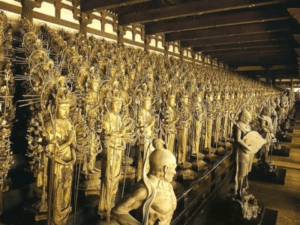 Source: Kyoto, Myohouin Sanjusangendo [National Treasure]
Source: Kyoto, Myohouin Sanjusangendo [National Treasure]Rats have the meaning of prosperity of their offspring, since they will soon grow and grow.
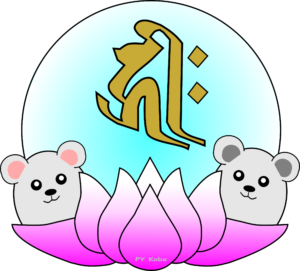 Time, direction, moon: 23:00 – 1:00 / North / November
Time, direction, moon: 23:00 – 1:00 / North / NovemberYin-Yang (the cosmic dual forces), the five element: Water, Yang (Positive / 陽)
Born year: 1912, 1924, 1936, 1948, 1960, 1972, 1984, 1996, 2008, 2020
 Source: Gifu, Itoshirotaishido [Important Cultural Property]
Source: Gifu, Itoshirotaishido [Important Cultural Property]Meat is an important food, power is labor, bone is an important material for engraving letters, and supports society.
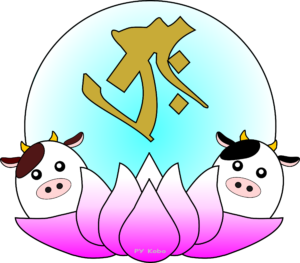 Time, direction, moon: 1:00 – 3:00 / North-notheast / December
Time, direction, moon: 1:00 – 3:00 / North-notheast / DecemberYin-Yang (the cosmic dual forces), the five element: Earth, Yin (Negative / 陰)
Born year: 1913, 1925, 1937, 1949, 1961, 1973, 1985, 1997, 2009, 2021
 Source: Gifu, Itoshirotaishido [Important Cultural Property]
Source: Gifu, Itoshirotaishido [Important Cultural Property]The tiger was considered to be a shining star in the night sky because of the beautiful pattern of the fur on the body.
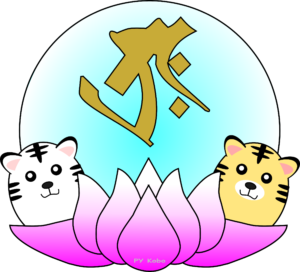 Time, direction, moon: 3:00 – 5:00 / East-northeast January
Time, direction, moon: 3:00 – 5:00 / East-northeast JanuaryYin-Yang (the cosmic dual forces), the five element: Wood, Yang (Positive / 陽)
Born year: 1914, 1926, 1938, 1950, 1962, 1974, 1986, 1998, 2010, 2022
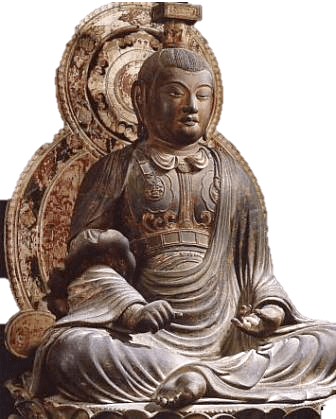 Source: Nara / Kofukuji Temple / [National Treasure] sitting statue of Monju Bosatsu
Source: Nara / Kofukuji Temple / [National Treasure] sitting statue of Monju Bosatsu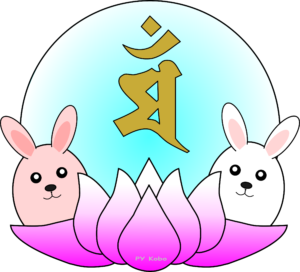 Time, direction, moon: 5:00 – 7:00 / East / February
Time, direction, moon: 5:00 – 7:00 / East / FebruaryYin-Yang (the cosmic dual forces), the five element: Wood, Yin (Negative / 陰)
Born year: 1915, 1927, 1939, 1951, 1963, 1975, 1987, 1999, 2011, 2023
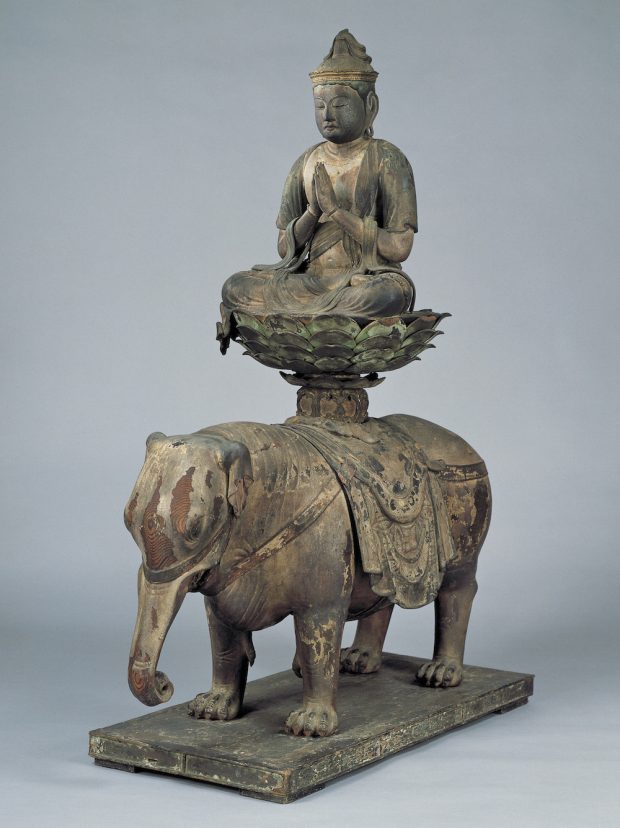 Source: Tokyo, Okura Shukokan / [National Treasure] statue of Fugen Bosatsu (Bodhisattva) riding on an elephant
Source: Tokyo, Okura Shukokan / [National Treasure] statue of Fugen Bosatsu (Bodhisattva) riding on an elephantDragon, a legendary creature, is said to be the good omen, and since ancient times in China it has been regarded as a symbol of power.
 Time, direction, moon: 7:00 – 9:00 / East-southeast / March
Time, direction, moon: 7:00 – 9:00 / East-southeast / MarchYin-Yang (the cosmic dual forces), the five element: Earth, Yang (Positive / 陽)
Born year: 1916, 1928, 1940, 1952, 1964, 1976, 1988, 2000, 2012, 2024
 Source: Tokyo, Okura Shukokan / [National Treasure] statue of Fugen Bosatsu (Bodhisattva) riding on an elephant
Source: Tokyo, Okura Shukokan / [National Treasure] statue of Fugen Bosatsu (Bodhisattva) riding on an elephantIt is said that the snake is obstinate, but it is said that the snake will give back to those who helped.
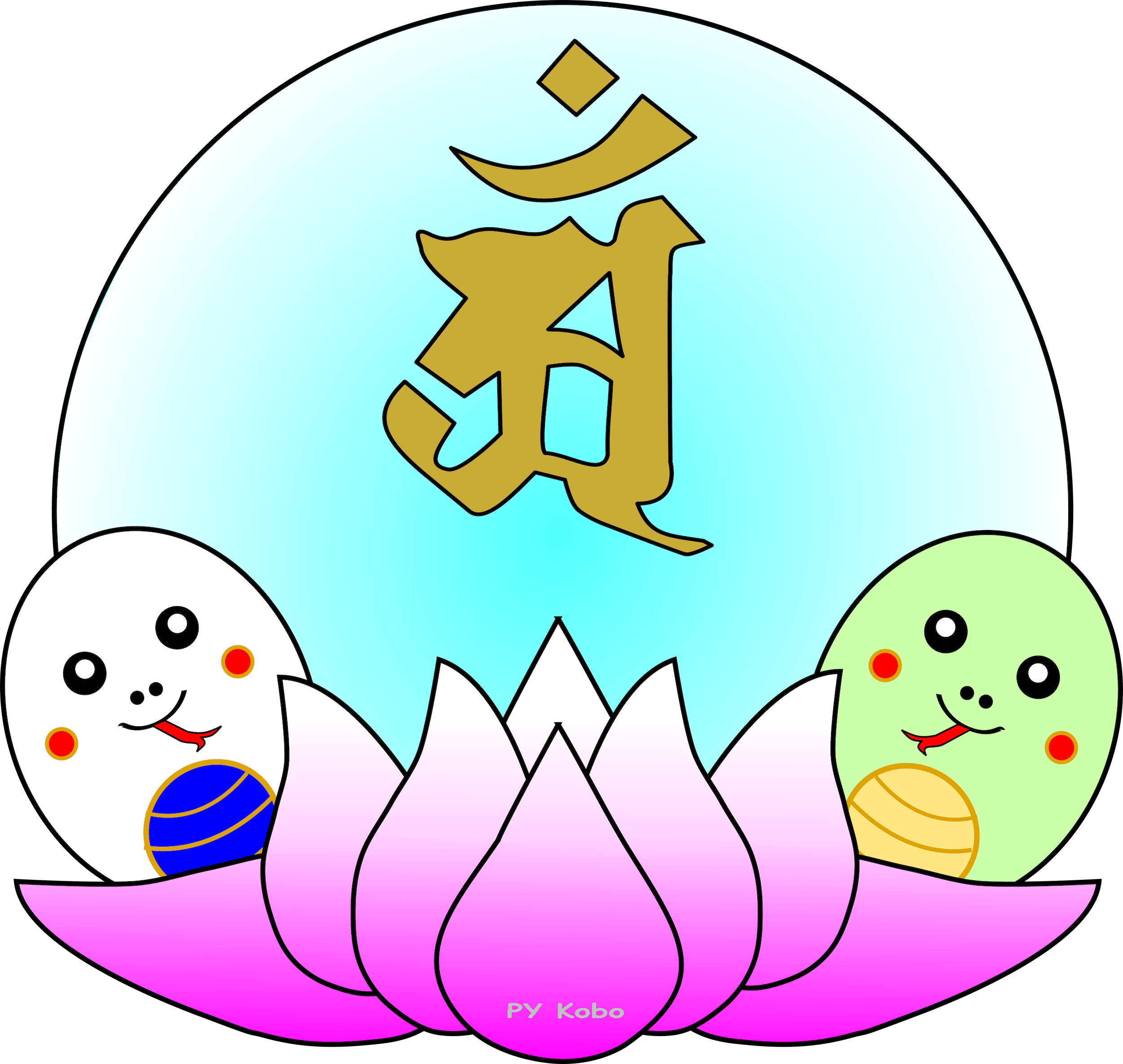 Time, direction, moon: 9:00 – 11:00 / South-southeast / April
Time, direction, moon: 9:00 – 11:00 / South-southeast / AprilYin-Yang (the cosmic dual forces), the five element: Fire, Yin (Negative / 陰)
Born year: 1917, 1929, 1941, 1953, 1965, 1977, 1989, 2001, 2013, 2025
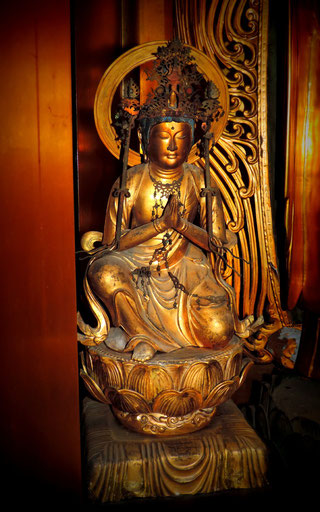 Source: Osaka, Ai Dainenji
Source: Osaka, Ai DainenjiHorses are old animals that have a long relationship with people. It was helpful for people, and humans also treated horses carefully.
 Time, direction, moon: 11:00 -13:00 / South / May
Time, direction, moon: 11:00 -13:00 / South / MayYin-Yang (the cosmic dual forces), the five element: Fire, Yang (Positive / 陽)
Born year: 1918, 1930, 1942, 1954, 1966 , 1978, 1990, 2002, 2014, 2026
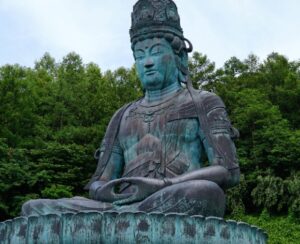 Source: Aomori, Seiryuji Temple / Wikipedia / Showa Daibutsu
Source: Aomori, Seiryuji Temple / Wikipedia / Showa DaibutsuThe flocking sheep show the security of the family and mean to live in peace forever.
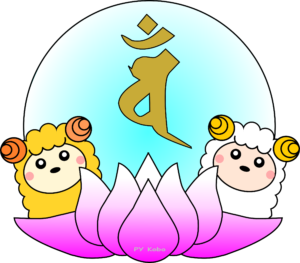 Time, direction, moon: 13:00-15:00 / Southwest / June
Time, direction, moon: 13:00-15:00 / Southwest / JuneYin-Yang (the cosmic dual forces), the five element: Earth, Yin (Negative / 陰)
Born year: 1919, 1931, 1943, 1955, 1967, 1979, 1991, 2003, 2015, 2027
 Source: Aomori, Seiryuji Temple / Wikipedia / Showa Daibutsu
Source: Aomori, Seiryuji Temple / Wikipedia / Showa DaibutsuThe monkey was a wise animal in the mountain and believed to be a messenger of Yamagami (mountain god). It is a familiar animal even as a target of faith.
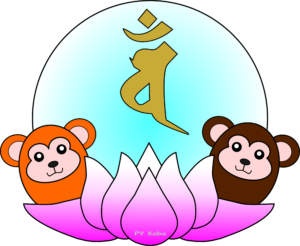 Time, direction, moon: 15:00 -17:00 / West-southwest /July
Time, direction, moon: 15:00 -17:00 / West-southwest /JulyYin-Yang (the cosmic dual forces), the five element: Metal, Yang (Positive / 陽)
Born year: 1920, 1932, 1944, 1956, 1968, 1980, 1992, 2004, 2016, 2028
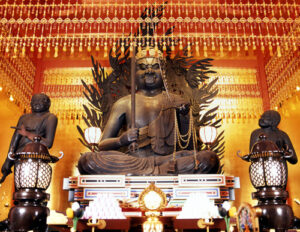 Source: Tokyo, Takabatasan Kongouji Temple
Source: Tokyo, Takabatasan Kongouji Temple“Tori” is said to be “tori-komu (take-in)”, and is considered to be good for business.
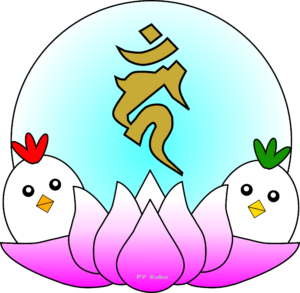 Time, direction, moon: 17:00 -19:00 / West / August
Time, direction, moon: 17:00 -19:00 / West / AugustYin-Yang (the cosmic dual forces), the five element: Metal, Yin (Negative / 陰)
Born year: 1921, 1933, 1945, 1957, 1969, 1981, 1993, 2005,2017, 2029
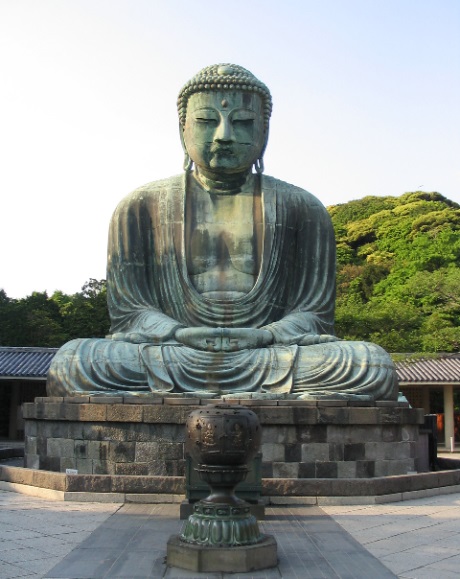 Source: Kotokuin, Kamakura Daibutsu / [National Treasure] bronze sitting statue of Amida Nyorai
Source: Kotokuin, Kamakura Daibutsu / [National Treasure] bronze sitting statue of Amida NyoraiDogs are social and faithful. Dogs are old and friendly animals that are associated with people.
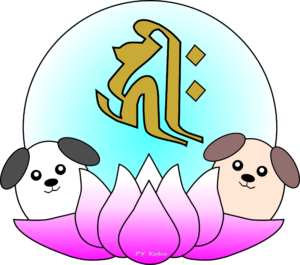 Time, direction, moon: 19:00 – 21:00 / West-northwest / September
Time, direction, moon: 19:00 – 21:00 / West-northwest / SeptemberYin-Yang (the cosmic dual forces), the five element: Metal, Yang (Positive / 陽)
Born year: 1922, 1934, 1946, 1958, 1970, 1982, 1994, 2006, 2018, 2030
 Source: Kotokuin, Kamakura Daibutsu / [National Treasure] bronze sitting statue of Amida Nyorai
Source: Kotokuin, Kamakura Daibutsu / [National Treasure] bronze sitting statue of Amida NyoraiBoar meat is said to prevent all disease and is considered to be a symbol of disease-free disease.
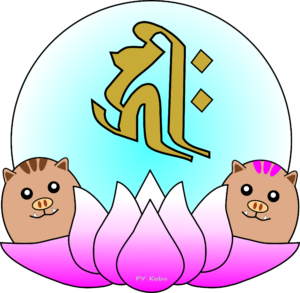 Time, direction, moon: 21:00 – 23:00 / North-northwest / October
Time, direction, moon: 21:00 – 23:00 / North-northwest / OctoberYin-Yang (the cosmic dual forces), the five element: Water, Yin (Negative / 陰)
Born year: 1923, 1935, 1947, 1959, 1971, 1983, 1995, 2007, 2019, 2031
Junishi and “Toshi-otoko” “Toshi-onna”
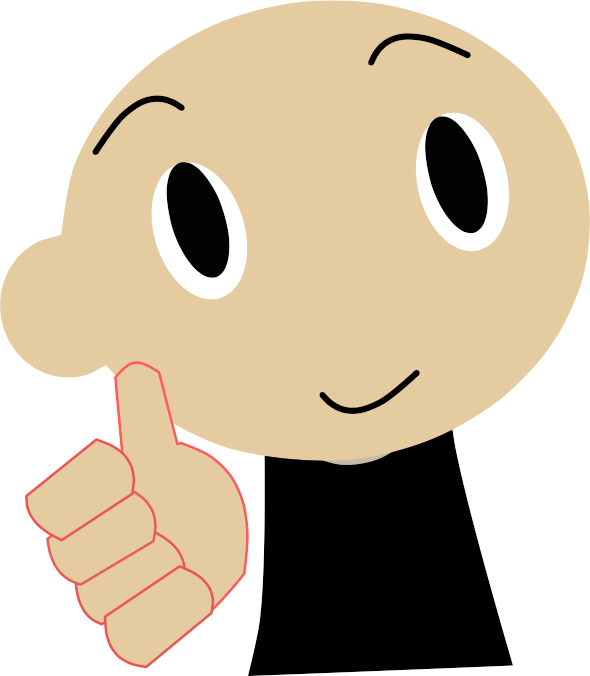
Once in 12 years, the zodiac year of my birth comes around. Is there anything good that year?
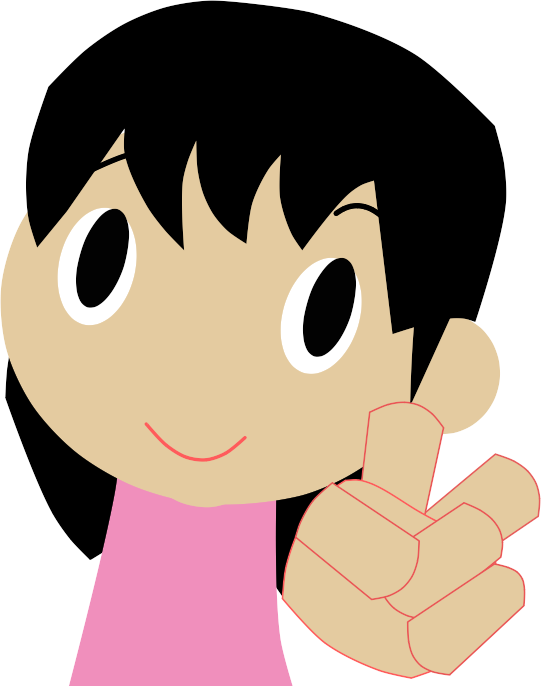
It is said that the year of the same zodiac as the year of birth is a lucky year in which the blessing of the patron deity is given.

Great, the year of the zodiac in own birth is lucky! Is there related with the terms “Toshi-otoko / 歳男” and “Toshi-onna / 歳女” that we often hear during New Year?

Men or women born in the year current under the twelve-year cycle of the Oriental zodiac are called “Toshi-otoko”for men and “Toshi-onnna” for women. A chance to get great luck once in 12 years may come!

So, are “Toshi-otoko” and “Toshi-onna” in 2024 men and women born in the year of the dragon?

Yes! Eto of 2024 is “Kinoe (甲) – Tatsu (辰 = dragon)”, the year of the dragon. By the way, in the year of the dragon, the blessing of Fugen Bosatsu (Fugenu Bodhisattva) as the patron is given. For details on Bodhisattva, please check HERE on our website.

In 2024, it would be nice to visit the temple where Fugen Bosatsu (Fugen Bodhisattva) is enshrined!
Mukai eto (opposition sign)
The sign that is seven years ahead of your sign is called “Mukai eto (opposition sign).” From the Edo period in Japan, there is a legend that good luck comes when you collect items from the opposite sign. In addition, in human relations, it is said that affinity with the opposite sign is good.
- Rat <=> Horse
- Cow<=> Sheep
- Tiger<=> Monkey
- Rabbit<=> Rooster
- Dragon<=> Dog
- Snake<=> Boar
Lucky colour & recommended items of Junishi
*Lucky colour of water attribute: dark blue, black, dark gray
Black is recommended for those born in the year of the rat.
*Lucky item: Glass-based items, pictures drawn the sea and the moon, etc.
*Lucky stone: Citrine
*Lucky colour of earth attribute: yellow, brown, beige, green brown
Brown is recommended for those born in the year of the cow.
*Lucky item: Porcelain, bricks, pottery etc…
*Lucky stone: Moonstone
*Lucky colour of tree attribute: green, yellowish green, blue
Blue is recommended for those born in the year of the tiger.
*Lucky item: straight shape, houseplants, tapestry, wood products, etc..
*Lucky stone: Tiger Eye
*Lucky colour of tree attribute: green, yellowish green, blue
Green is recommended for those born in the year of the rabbit.
*Lucky item: straight shape, houseplants, tapestry, wood products, etc..
*Lucky stone: Jade
*Lucky colour of earth attribute: yellow, brown, beige, green brown
Yellow is recommended for those born in the year of the dragon.
*Lucky item: Porcelain, bricks, pottery etc..
*Lucky stone: Carnelian, Garnet
*Lucky colour of fire attribute: red, pink, purple
Purple is recommended for those born in the year of the snake.
*Lucky items: triangles, candles, lights, etc..
*Lucky stone: Hematite
*Lucky colour of fire attribute: red, pink, purple
Red is recommended for those born in the year of the horse.
*Lucky items: triangles, candles, lights, etc..
*Lucky stone: Agate
*Lucky colour of earth attribute: yellow, brown, beige, green brown
Yellow is recommended for those born in the year of the sheep.
*Lucky item: Porcelain, bricks, pottery etc..
*Lucky stone: Coral
*Lucky colour of metallic attribute: white, silver, gold
Beige is recommended for those born in the year of monkey.
*Lucky item: precious metals, sparkling things, machine products, etc.
*Lucky stone: Crystal
*Lucky colour of metallic attribute: white, silver, gold
White is recommended for those born in the year of rooster. }
*Lucky item: precious metals, sparkling things, machine products, etc.
*Lucky stone: Blue lace agate
*Lucky colour of metallic attribute: white, silver, gold
Yellowish colour is recommended for those born in the year of dog.
*Lucky item: precious metals, sparkling things, machine products, etc.
*Lucky stone: Lapis lazuli
*Lucky colour of water attribute: dark blue, black, dark gray
Gray is recommended for those born in the year of the boar.
*Lucky item: Glass-based items, pictures drawn the sea and the moon, etc..
*Lucky stone: Rose quartz
